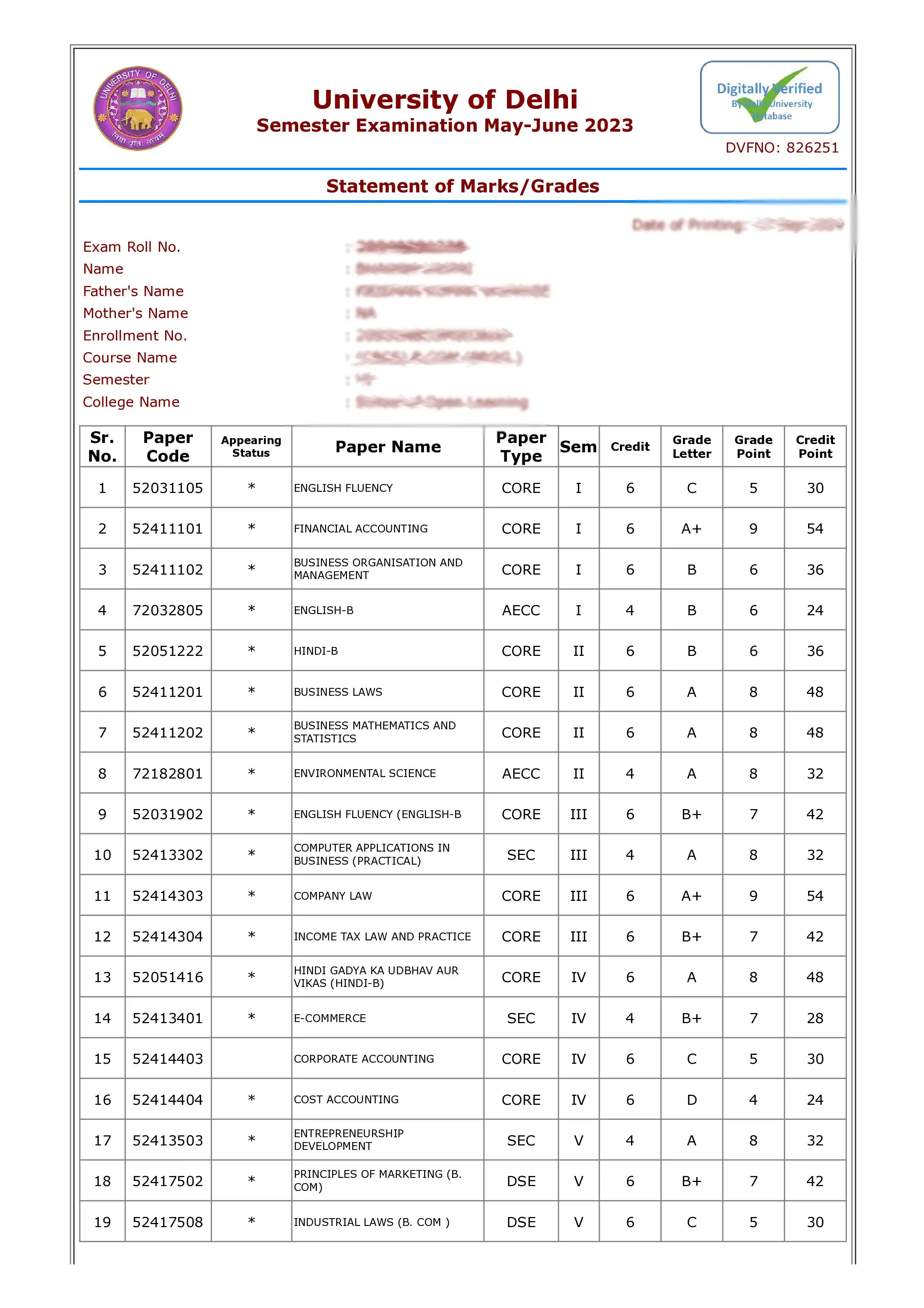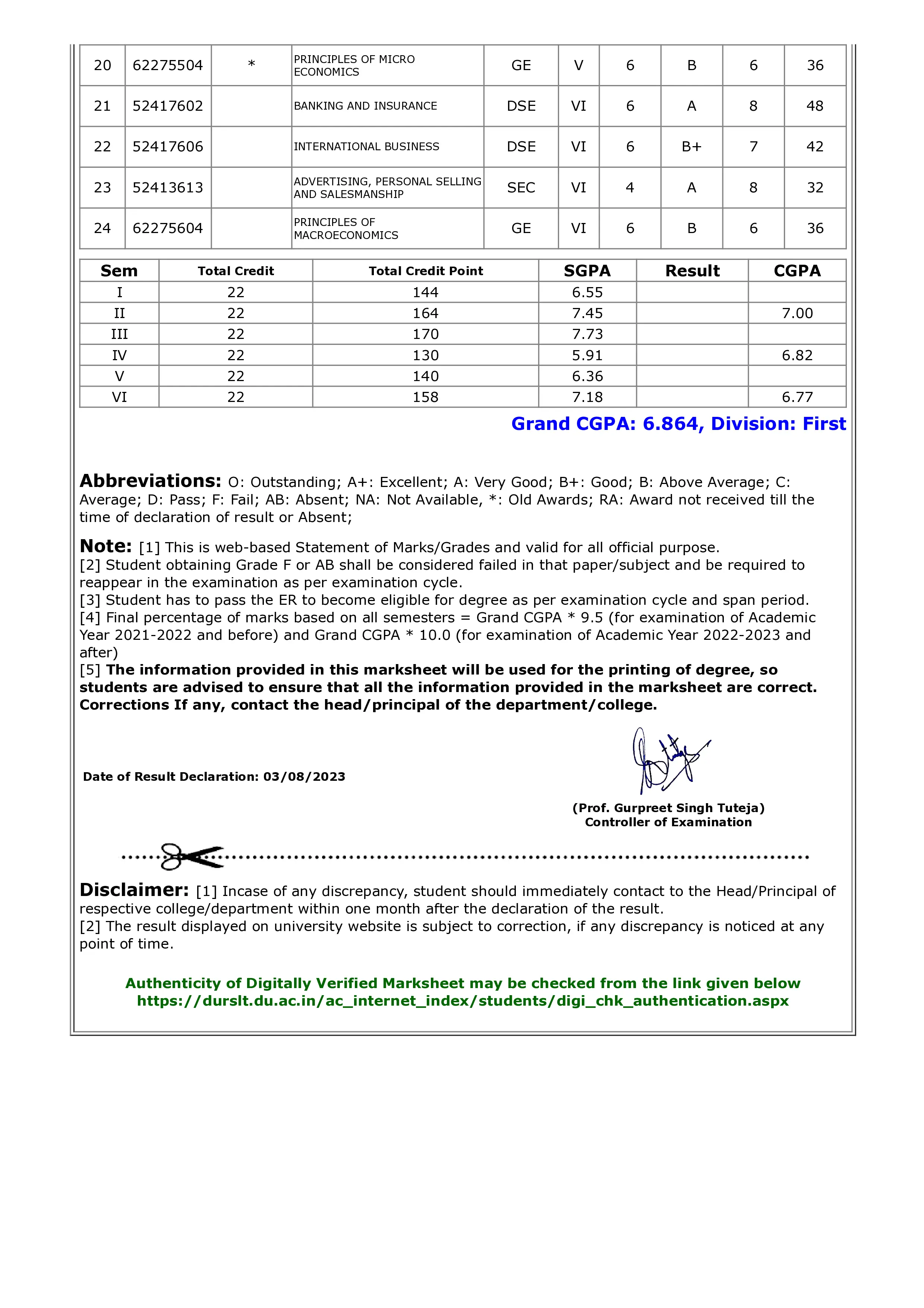



















Most learners discover that SGPA is printed on their report cards, but because of a lack of understanding, they pose the inability to convert it from SGPA to a percentage. SGPA is the indicator of a learner's performance during a semester. However, many recruiters or educational institutions request a percentage as a must-have document. The method of conversion changes from one university to another, and so it becomes important to be acquainted with the correct formula in force at a specific institution.
Semester Grade Point Average reflects a student's performance in a term. When one is opting for a job or continuing his/her education, they are asking for a percentage from the school. Conversion mechanisms depend on the college of one's choice; therefore, it is important to be aware of the correct formula.

SGPA is the abbreviation of Semester Grade Point Average. Universities make use of this system to determine a student's achievement during one semester. Without any division of marks into percentages, SGPA is the definite geometric average of the grade points. Each subject is provided with grade points depending on performance, and the SGPA is calculated through the weighted average of these grade points.
SGPA is an explicit representation of students' performance in one semester and makes it easier for them to know where they stand. The absence of percentages means the uniformity of the evaluation eliminates variations in both the difficulty level and the marking pattern of the exam.
The Semester Grade Point Average, or SGPA, is measured through the combination of different academic elements, which include semester grade points received, and credit points assigned to each subject-writing of the SGPA is taken as either the measure itself or all together for that term. It indicates your academic performance during that semester.
A working half-year term in a college or university; SGPA is calculated for every semester based on one's performance in that particular term.
Grade point is the number given to letter grades-A, B, C, etc. The higher the grade, the higher is the point, and these points add to your SGPA.
Credit points indicate the weight of the subject. A subject with more credits will affect your SGPA more than a subject with fewer credits.
To find your SGPA, follow these steps:
Check Your Grades - Every subject has a grade (A, B, C, etc.), which has a point value. Example:
| Subject | Grade | Points | Credits | Grade Points (Points × Credits) |
|---|---|---|---|---|
| Math | A | 10 | 4 | 40 |
| Science | B | 8 | 3 | 24 |
| English | B | 8 | 2 | 16 |
| History | C | 6 | 3 | 18 |
| Computer | A | 10 | 2 | 20 |
An SGPA to Percentage Converter is an easy tool that converts your SGPA (Semester Grade Point Average) into a percentage. Many universities offer marks in terms of SGPA, while jobs or other colleges might ask for a percentage. This converter will do the conversion for you quickly and accurately.
Just feed in your SGPA and hit the convert button to get the percentage result while you relax and let the formula do the work for you. Suitable for quick conversions, such as applying for jobs, admissions for higher studies, or government forms.
An SGPA to Percentage Calculator is a simple online tool that allows you to convert the SGPA (Semester Grade Point Average) into a percentage. While many colleges and universities give marks in SGPA, there are times when a candidate applies for a job, scholarship, or further study requiring percentage marks.
Gone are the days of applying complex formulas; just enter your SGPA, click on the calculate button, and it instantly displays your percentage. Fast and accurate, a definite plus for any student looking for quick results without any stress.
Conversion from SGPA to percentage is easy if you know the formula with which your university works. Most commonly, it is:
Percentage = (SGPA × 10) – 7.5
For example, if your SGPA is 8.2:
(8.2 × 10) – 7.5 = 82 – 7.5 = 74.5%
Note: Different universities use different formulas. So check your university’s official website for the correct formula.
Many educational institutions convert percentage to SGPA by simple math:
SGPA = (Percentage + 7.5) ÷ 10
For example, if the percentage is 75%:
(75 + 7.5) ÷ 10 = 82.5 ÷ 10 = 8.25 SGPA
The conversion from percentage to SGPA will just be an approximate number, and this might not be the case for all universities since some minor differences in procedures can occur. Therefore, it is strongly suggested that you check with the university faculty if they accept the same procedures for the conversion.
Another option is to use a Percentage to SGPA Calculator, where you put in your percentage, and it will give you your SGPA straight away!

Here is a simple SGPA to percentage conversion table. We have used the (SGPA × 10) – 7.5 formula:
| SGPA | Percentage |
|---|---|
| 10 | 92.50% |
| 9.5 | 87.50% |
| 9.0 | 82.50% |
| 8.5 | 77.50% |
| 8.4 | 76.50% |
| 8.3 | 75.50% |
| 8.2 | 74.50% |
| 8.1 | 73.50% |
| 8.0 | 72.50% |
| 7.9 | 71.50% |
| 7.8 | 70.50% |
| 7.7 | 69.50% |
| SGPA | Percentage |
|---|---|
| 7.6 | 68.50% |
| 7.5 | 67.50% |
| 7.4 | 66.50% |
| 7.3 | 65.50% |
| 7.2 | 64.50% |
| 7.1 | 63.50% |
| 7.0 | 62.50% |
| 6.9 | 61.50% |
| 6.8 | 60.50% |
| 6.7 | 59.50% |
| 6.6 | 58.50% |
| 6.5 | 57.50% |
Please note: This table is based on multiplying SGPA by 10 – 7.5, which is common in many Indian boards like CBSE. Some universities may use a different formula.

If you receive an F or AB grade, it means that you've failed to clear the subject and will have to reappear for the examination in the stipulated cycle. To get your degree, you must also clear any ER (Essential Repeat) subjects within the stipulated time frame. Your final percentage is derived based on your final CGPA, multiplied by 9.5 for students of up to the 2021–2022 batch, and by 10.0 for those from the 2022–2023 batch and onwards.



Students need to understand the differences between SGPA and CGPA to garner a clear view of their real academic profile.
The understanding of both helps the students to prepare better, target areas of improvement, and clearly convey their academic scores for jobs, further studies, or scholarships.

The letter grade system used by the UGC is an alphanumeric system that includes grades such as A, B, C, etc., to assess a student's performance. The system allows for a uniform and fair evaluation across universities in India.
| Percentage of Marks | Letter Grade as per UGC Guidelines | Grade Points |
|---|---|---|
| 90-100% | O stands for Outstanding | 10 |
| 80-90% | A+ stands for Excellent | 9 |
| 70-80% | A stands for Very Good | 8 |
| 60-70% | B+ stands for Good | 7 |
| 50-60% | B stands for Average | 6 |
| 40-50% | C stands for Pass | 5 |
| Below 40% | F stands for Fail | 0 |
| Absent | AB | 0 |
Hence, taking a calculator that acts according to your university method is always the safest thing to do!
While converting SGPA to percentage or percentage to SGPA, several key points affect the conversion result:

Conversion of SGPA to percentage (or vice versa) is simple when you have the right formula or use a trustworthy online calculator. However, do check once with your university guidelines for accuracy.
In case you want to look for some more academic tools, then navigate here to our:
These tools are free and user-friendly, created to help students like you save their precious time and spare themselves some stress!

No, the formula varies from college to college. It is always advised to take a look at the official means approved by the university before converting SGPA to a percentage in order to prevent miscalculations and the resultant incorrect academic records.
No, different universities use different formulas. A few universities subtract a fixed value before multiplying, while some apply different coefficients. Be sure to go through your university’s guidelines at all times.
The official website provides you with your university's SGPA-to-percentage conversion formula. If it is offline, contact your university’s academic office or student support centre.
Yes, some companies and universities exclusively demand percentages instead of SGPA. Switching SGPA to percentage not only rings the bell of eligibility requirements for employment opportunities but also academic admissions and government exams (e.g., where the qualifications are percentage-based that matters).
Best-in-class content by leading faculty and industry leaders in the form of videos, cases and projects, assignments and live sessions